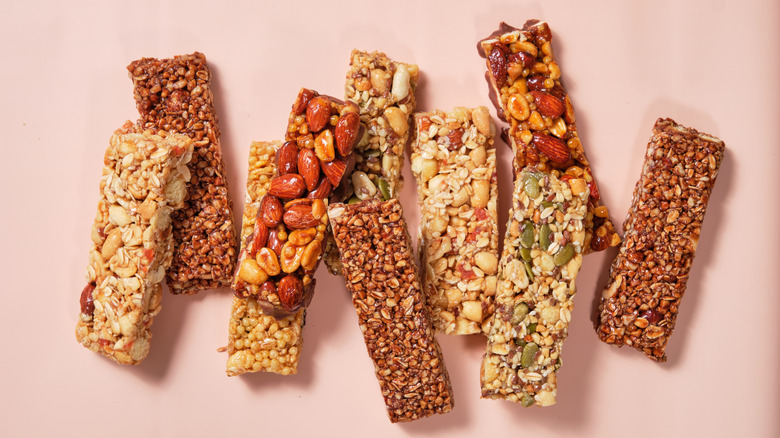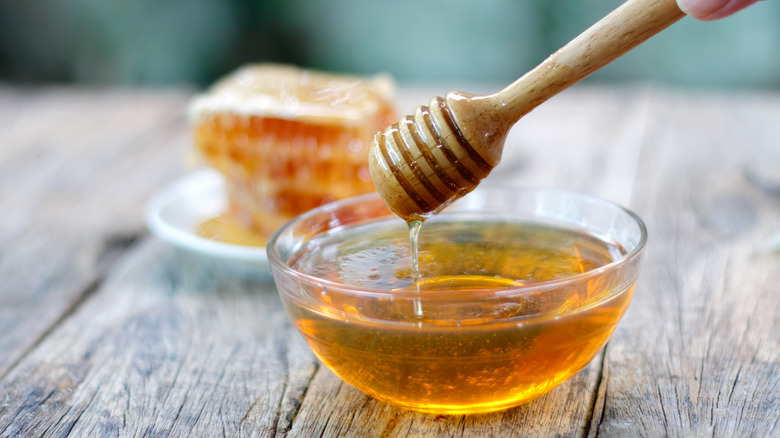Ancient Greek Energy Bars Were Much Different From Today's Versions
Long before the era of protein powders and brightly wrapped supermarket snacks, the ancient Greeks had their own version of an energy bar, and they called it pasteli. It only requires two ingredients — honey and sesame seeds — which provide quick fuel from natural sugars and sustained energy from healthy fats and plant-based protein. The combination offered everything an active lifestyle demanded, whether that was giving soldiers the jolt they needed before battle or providing athletes with an energy boost. Its minimal ingredient list also made it easy to prepare, store, and transport without refrigeration.
Pastelis stuck around primarily because they were practical and simple (what's not to love?). Honey acted as both a sweetener and a natural preservative, while sesame seeds brought a rich, nutty taste along with essential minerals and oils. When gently heated together, the two formed a cohesive, portable bar that could last for weeks without going bad; compared to modern energy snacks loaded with stabilizers and synthetic flavorings, pasteli is proof that functional food doesn't need complexity to be effective. The recipe has barely changed in thousands of years, which says as much about its efficacy as it does about the long-lasting appeal of honey and sesame in Mediterranean cooking.
Pasteli's place in Greek culture, then and now
It's important to remember that, outside of a convenient source of calories, pasteli was also a reflection of Greece's agricultural heritage. In ancient times, it was tied closely to seasonal cycles because honey would be harvested after the peak bloom of flowers, and sesame was collected toward the end of summer. The marriage of the two ingredients was symbolic in that honey represented health and longevity, while sesame was considered a food of vitality and fertility (in association with the goddess Demeter). That symbolism, paired with how easy it was to transport the bars from place to place, made it a fixture in both daily life and festive occasions like weddings.
Pasteli remains widely available even today throughout Greece, particularly within the Cyclades. In village markets and urban bakeries alike, you'll find it sold in slim, golden bars, sometimes wrapped simply in paper, other times sealed in plastic for tourists and locals on the go. And though the traditional version uses only sesame and honey, modern adaptations may include almonds, pistachios, or orange zest for extra flavor notes. This balance of old and new mirrors the way other nostalgic foods, like handmade pastries or preserved sweets, evolve to suit changing tastes while staying rooted in their origins. Pasteli continues to thrive because it offers both nourishment and a tangible connection to Greek culinary history.
How to make your own pasteli at home
Recreating pasteli at home doesn't require specialized skills, and if you're not trying to go the modern route, you're looking at just a few minutes of focused cooking. Start with equal parts sesame seeds and honey by weight, adjusting if you prefer a chewier or crunchier result. Toast the sesame seeds in a dry skillet until they become fragrant, which enhances their nuttiness. In another pan, heat the honey over medium-low until it thickens and bubbles gently, and then stir the sesame seeds into the honey, making sure every seed is coated. Lastly, pour the mixture onto a parchment-lined tray, or, if you have bar-shaped molds, you could use that, too.
If you use the parchment paper, be sure to spread it evenly to your preferred thickness, and while it's still warm, score it with a sharp knife into bars or diamonds. Once completely cooled, break along the scored lines. For extra flavor, you can fold in chopped nuts, sprinkle the surface with cinnamon, or mix in lemon or orange zest before spreading. Stored in an airtight container, pasteli will stay good for a few weeks, so it's a much better no-bake recipe alternative to processed bars when you want quick energy.


